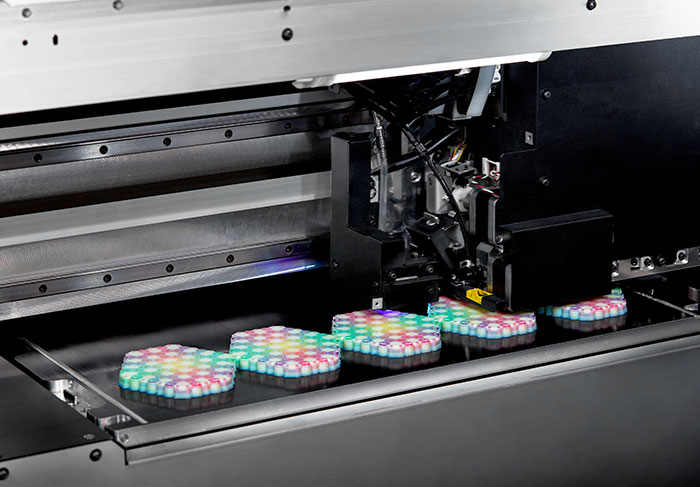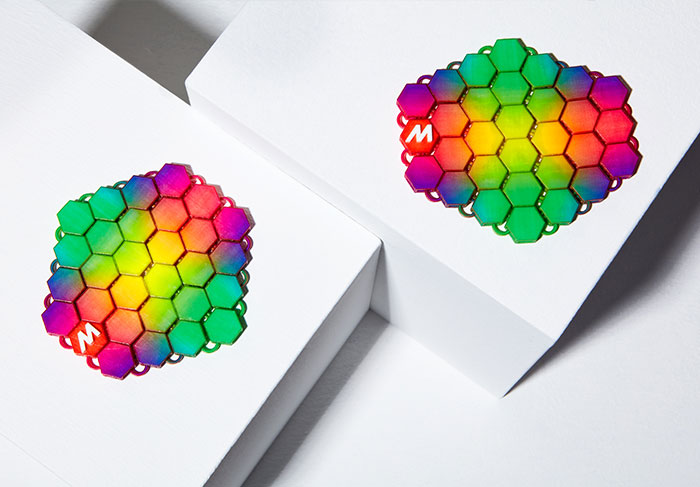A Byline article

3D printing, also referred to as additive manufacturing, has been around for many years. Like many emerging technologies, it went through a period of what some would describe as excessive hype and was perceived more as a novelty than as a disruptive technology that could significantly impact traditional manufacturing strategies. But over the past few years, we have begun to see hype meet reality as the market is beginning to see exponential growth. According to a market forecast produced by Wohlers Associates, Inc. in 2015, the 3D printing market may finally be entering a hockey stick growth phase. It’s projected to grow from about $7 billion in 2016 to $21 billion in 2020.
Yet with all the growth and projected growth, it is still a largely untapped market. Today, the market share of 3D printed materials is miniscule. Wohlers Associates, Inc. believes 3D printing will eventually capture 5% of the global manufacturing capacity, which would make 3D printing a $640 billion industry.
It is for this reason that the manufacturing of 3D printing engines is an attractive opportunity being pursued by a number of companies, including Mimaki.
Who is Mimaki?
Founded in Japan in 1975, Mimaki has steadily grown by reputation and influence into a global printer manufacturing company, establishing itself as a leading manufacturer of wide format inkjet printers and cutting machines. These can produce a variety of applications, such as indoor and outdoor signage, packaging, promotional gifts and soft furnishings, to name a few. With 1.580 employees worldwide, the company generates revenues of approximately $375 million euro annually. Europe is its biggest market at this point.
Making the leap from UV-curable 2D inkjet printing devices to 3D printing was a logical step for Mimaki, and the company has dedicated significant R&D resources to its 3D development efforts. The Mimaki 3DUJ-553 is the company’s first foray into 3D market, using a unique technique based on its advanced UV inkjet printing technology.
About UV-curable inkjet printing
The inkjet printing that most people are familiar with uses water-based inks, such as the inkjet printers used in homes and offices around the world. These printers create a digital image on paper or other substrates by propelling droplets of ink with extremely accurate placement. Water-based inks require specialised substrates to minimise the amount of ink absorption, and for higher volume, more professional applications, inkjet printing systems include elaborate drying systems to remove water from the paper, leaving the ink pigments behind.
Systems using UV-curable inks deliver a more durable product. With UV curing, ultraviolet light and visible light are used to initiate a photochemical reaction that generates a cross-linked network of polymers. It is instantly dry and typically bonds well to a wide range of substrates. It is a low-temperature, high-speed, solvents process that can be used in printing, coatings, decorating, and – yes – 3D printing.
3D printers come in a variety of flavours. Input materials can be various types of powders, filaments and liquids, but what they all have in common is the ability to deposit material in layers to create the desired object. This is referred to as additive manufacturing, as opposed to more traditional manufacturing models where material is subtracted to create the object – such as drilling, milling, lathes, etc. Because it is a digital process, it can be used to create one-of-a-kind objects or longer runs of the same object at a relatively consistent cost per part, with the quantity and type of deposition material – plastic resins, metals, ceramic and more – being the driver for total cost.

The Mimaki approach to 3D printing
Of the many different approaches to 3D printing, Mimaki chose to adopt an approach where the 3D printer jets successive layers of ink, which are instantly cured by UV light until the object is fully formed. Fine layers accumulate on the build tray to create one or several precise 3D models or parts. Where overhangs or complex shapes require support, the 3D printer jets a removable support material. It uses LED curing for reduced energy usage and is differentiated from other 3D printers in a number of aspects, including:
- The ability to print full-colour objects with more than 10 million colours. Colour profiles can be used to ensure accurate and consistent colour. This means no overpainting is required, saving time and labour.
- It offers white ink, as well as a clear ink overcoat that adds vibrancy to the printed product.
- Its support materials can be removed with a simple water wash, eliminating the need to manually cut tags or other support structures, which used to be a very time-consuming activity.
- It features a maximum build size of 50 x 50 x 30 cm, larger than comparable 3D printers.

Drawing upon its many years of UV-curable inkjet printing in the 2D world, Mimaki has also equipped the 3DUJ-553 with its proprietary core technologies, including ink circulation system to prevent clogging and Nozzle Checking Unit (NCU). Printhead nozzles are automatically checked for any malfunction, with an effective nozzle substitution strategy that enables continuous printing, even if a nozzle is not operating correctly. In addition, the printer is equipped with an internal monitoring camera that enables operators to monitor the progress of the printing.
In addition to its uses in additive manufacturing applications, the Mimaki 3DUJ-553 is also suitable for other uses, including:
- Prototyping during the design process;
- Full-colour prototyping for early market introduction;
- Printing test parts for fitting;
- Creating models for the architectural, shipbuilding, off-shore and other industries that previously had to create models manually.
3D Printing: The time is now
3D printing’s time has arrived. After many years of development and experimentation, a wide variety of industries are now adopting 3D printing for a number of different uses. As the technology continues to evolve, the economic cross-over point between 3D printing objects versus using traditional manufacturing processes will continue to rise.
Whether it is printing replacement parts in space for the International Space Station, creating unique home décor items, producing a realistic architectural model, or simply producing promotional items, the potential for 3D printing is limitless.
In addition, as the market increasingly demands more customisation, more versions and SKUs, and more manufacturing of parts and other items at the point of need, production run lengths are shortening, creating even more demand for 3D printing capabilities.
For more information about 3D printing, Mimaki’s 3D printing approach, or ideas about how 3D printing can enhance your business, Mimaki experts are available to share their expertise and ideas.






